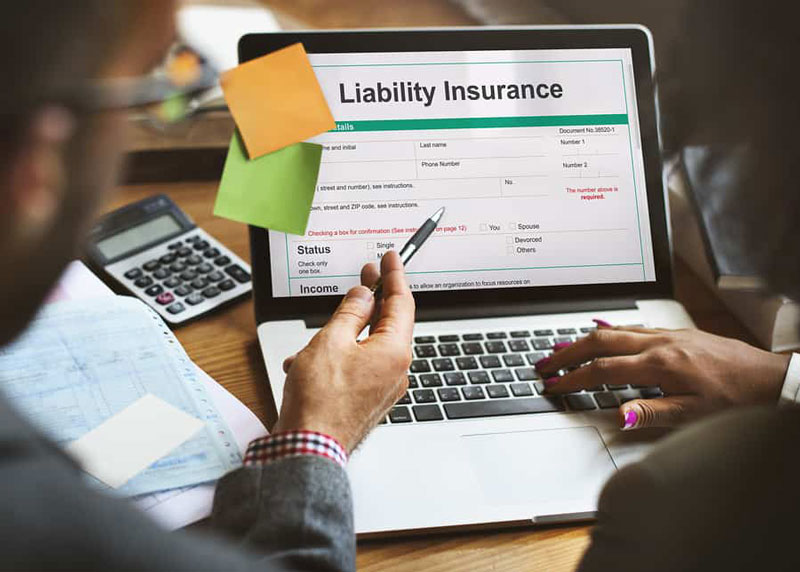A policy acquired from an insurance company (the second party) by the insured (the first party) provides coverage against the claims of a third party (third party).
Insurance Coverage for Third Parties: A Guide
In its most basic form, liability insurance is what third-party insurance covers. Regardless of the source of the damages, the first party is accountable for them. Automobile insurance is a frequent form of third-party insurance.
It is possible to get third-party insurance to cover damages and costs sustained by a motorist who is not covered by the insurance policy. The third party is the person responsible for the damage.
How Does Third-Party Insurance Work?

The insurance covers third-party property repairs if the policyholder is involved in an accident. As a result, the policyholder is spared additional financial stress. Before submitting a claim, the insured must notify the insurance company of any accidents.
To determine the extent of the damage and the likely cost of repairs, the insurance sends out a surveyor when a claim is made. The claim is settled once the insurer has verified the facts.
Benefits of Third Party Insurance
A minimum level of bodily injury liability and property damage liability coverage is required by law for all drivers. Some states do not require either or impose further restrictions. The minimal requirements for each form of coverage vary from state to state.
Even in "no-fault" areas, liability insurance is a must-have for everybody who drives. No-fault laws were enacted to decrease or eliminate common injury cases with little cash value and a disproportionate amount of claims for pain and suffering. No-fault regulations do not shield insureds against multimillion-dollar injury claims brought by third parties who have been gravely wounded.
Individuals, like homeowners, who have a significant amount of wealth to safeguard should consider both third-party insurance forms. If an insured has a lot of money and assets, their liability coverage limit should be increased accordingly.
Special Considerations
All parties sued by a third party must have third-party or liability insurance, which is mandatory in most countries. Subcontractors, engineers, architects, and architects are some industries that fall under the umbrella of public liability insurance.
Visitors, guests, or facility users are all examples of third parties in this context. To guard against property damage or personal injury, most businesses carry some public liability insurance.
Liability insurance for products is usually required by law, which varies from nation to country and industry. Chemicals, agricultural items, and recreational equipment are all included under this policy's scope. It shields firms from being sued for damages or injuries caused by their goods or components.
Third-Party Insurance: What Does It Mean?

In its most basic form, liability insurance is what third-party insurance covers. First and second parties acquire third-party liability insurance policies to protect themselves from claims made by someone else (third party). If you cause an accident or damage to someone else, third-party insurance might help you get compensation.
What Are the Different Types of Third-Party Auto Insurance?
Auto third-party liability coverage includes bodily injury and property damage liability options. Injuries to a person are covered under bodily injury responsibility. The costs of these injuries might include lost pay, suffering, and medical fees due to the collision. Liability for damage to or loss of property, such as new landscaping materials or fences, is covered by property damage liability. Damage to your mailbox and loss of use of your house may be compensated if destroyed.
What Other Kinds of Insurance Cover Third-Party Liability?
A subcontractor's, architect's, or engineer's public liability insurance covers the actions and procedures that may impact third parties. Visitors, guests, or facility users are all examples of third parties in this context. To guard against property damage or personal injury, most businesses carry some kind of public liability insurance.
Liability insurance for products is usually required by law, which varies from nation to country and industry. All major product categories and kinds are covered, including anything from sporting goods to chemicals and agricultural supplies. The insurance aims to protect firms from being sued for damages or injuries caused by their goods or components.
Claim for Third Party Insurance
The policyholder must follow the claim procedures to get reimbursement from the insurance company. The following are the stages involved in claiming third-party insurance:
As a first step, the policyholder must notify their insurance provider of any accidents within the timeframe specified in their policy contract. When an accident occurs, a police report must be made at the nearest station, and the insured must obtain a copy of the report.
Submit a claim to the lender by completing the form and providing all required documentation. The insurance will send a surveyor to examine the damage and confirm the estimated cost after receiving a claim filing. The surveyor submits a report following the evaluation. The insurer resolves the claim based on the information in the report.







